The Humboldt County Board of Supervisors. | Screenshot.
PREVIOUSLY:
- Got Ideas About How Humboldt Can Reduce Its Carbon Footprint? City of Eureka, County Government to Hold ‘Climate Action Plan Public Workshop’ Later This Month
- As the Planet Heats Up, the County Plans to Address Rising Sea Levels With an Emissions Reduction Plan and a Slow Retreat Strategy
- TODAY in SUPES: An Apology, Some Vaccine Hesitancy, a Climate Action Plan and a Code of Ethics, Oh My!
###
Earlier this week the Humboldt County Board of Supervisors accepted the public review draft of the Regional Climate Action Plan, an ambitious environmental document being drafted in collaboration with local cities in an effort to reduce greenhouse gas emissions in the coming decades.
The unanimous vote, which was taken with Third District Supervisor Mike Wilson absent, served to advance the Climate Action Plan to the stage where planning staff can begin working on an environmental impact report (EIR). Planning and Building Director John Ford stressed that the document is still very much a work in progress.
At the outset of the board’s discussion, Ford said, “We recognize that there are still some things that need to be worked out … [and] that there are still people commenting on things and working on things, so it doesn’t have to be perfect at this point.”
That caveat provided some minor relief for Second District Supervisor Michelle Bushnell, who described the draft plan as “more of an urban document,” one that may have “missed the mark a little bit for rural living” by failing to accommodate locals whose homes are in remote locations, sometimes off the grid.
Senior Planner Michael Richardson explained that the goal of the plan, broadly, is to reduce greenhouse gas emissions countywide. In doing so, the county hopes to meet reduction targets established by the state, which would simplify and streamline environmental review for future development.
The first target is to reduce greenhouse gas emissions to 40 percent of the county’s 1990 levels by 2030. The longer-term goal is to achieve net neutrality by 2045, effectively zeroing out the region’s net greenhouse gas emissions. Richardson said staff has already identified measures to reach that goal.
The largest reduction of GHG emissions will come from electrifying local infrastructure, followed by zero-emission passenger vehicles, according to the Regional Climate Action Plan.
First District Supervisor Rex Bohn asked about the level of public outreach thus far and was informed that there was a series of public workshops held throughout the county, and once the EIR is complete, public hearings will be held in all participating jurisdictions, including the county and all seven of its incorporated cities.
Bushnell peppered planning staff with a series of questions. She asked whether a region so rich with trees will be able to take advantage of carbon credits, to which Richardson and Ford replied that it’s possible, though such an endeavor would be “intensive,” likely requiring an outside consultant to develop a sequestration strategy.
Noting that her own district is very rural, Bushnell said she wasn’t quite comfortable with the plan’s call for a 20 percent reduction in water usage across the board.
“I don’t know if it’s appropriate in this document to say that when it’s conditional on climate — you know, drought or not drought,” she said.
Ford explained that the 20 percent reduction is a reference to green building standards in the state’s existing regulations, and there’s no way to adopt a qualified Climate Action Plan without complying with those standards.
“You might ask, ‘What’s the importance of that? Is that just a political thing that we’re trying to do, or are there really benefits to the county?’” Ford said. He explained that as the county moves forward with any kind of development, environmental impacts will soon be part of the discussion for every single project. And if the county doesn’t have a qualified Climate Action Plan, every project will be subject to extensive additional review.
“I know some of this is shocking,” Ford said. “But the reality is [that] this is where our legislative process is going at the state level, and if we aren’t moving with that, we’re going to be increasingly in a more and more difficult position to see development approved.”
Bushnell continued to questions the plan’s compatibility with rural living, noting that full electrification might not be achievable for people who get power and heat from generators and propane.
“That’s how people live off the grid,” she said.
“I think we have a little bit more work to do, frankly,” Richardson acknowledged. “And that will be a focus of the public engagement through the EIR process.”
Before leaving the meeting for another obligation, Third District Supervisor Mike Wilson said the draft plan is not perfect by his standards, nor by those of his constituents, but he thinks it’s good enough to start the environmental review process. And he said it’s reasonable to address the environmental challenges inherent in remote living styles because “the impacts of climate change are pretty extreme in those same spaces.”
During the public comment period, local environmental leaders including Matt Simmons, a staff attorney with the Environmental Protection Information Center (EPIC), and Caroline Griffith, executive director of the Northcoast Environmental Center (NEC), voiced support for adopting the plan, and they urged the board to exclude industrial point sources from the greenhouse gas emissions baseline. Simmons said that’s important because local governments have little control or influence over such emissions sources, which are regulated at the state and federal level.
Thomas Mulder, a SoHum cannabis grower and Bushnell’s appointee to the Humboldt County Planning Commission, disagreed, saying industrial point sources should be included, and like Bushnell, he argued that the plan should make more accommodations for rural living.
“Leaving those industrial heat sources [out] and excluding rural living actually drives the forces of Agenda 21, and that’s something I don’t really support,” Mulder said, referring to an extremist conspiracy theory about a secret plot to impose a totalitarian world government in the name of environmentalism.
More than half of countywide emissions in 2015 came from transportation. County staff is currently working on updating this information with 2020 data. | Image via the County of Humboldt.
###
Fifth District Supervisor Steve Madrone said he’d like to see the plan incorporate incentives to reward landowners and businesses “that boldly go forth and implement these things that are going to help our planet, help our communities, etc.”
He proceeded to make a motion to direct staff to proceed with the environmental review of the plan, but Bushnell still wasn’t ready to support it. She asked staff to address the concerns she’d raised, and Bohn raised a couple of his own. He said that references to building new housing only within a certain distance from a downtown could stifle growth.
“You guys, we’ve got to build probably 500 homes if you really want to do this [offshore] wind project, if you really want to do the [Nordic Aquafarms] fish project, and if we really want to accept what Cal Poly is doing,” Bohn said. “And we’re not going to put them all in eight-story apartment buildings.”
He also noted the limited electrical transmission capacity of PG&E’s local infrastructure. “Do we want to financially curtail ourselves and everything else?” he asked. “Or can we gradually keep going the way we’re going and and set up some more, you know, realistic goals?”
In the end, Ford, who will be heading to a new job in Fort Bragg before long, helped the board craft a motion incorporating their feedback and concerns expressed by local community members. The motion directs staff to further refine the Climate Action Plan and use the EIR addresses the following:
- the complexities of rural living, making sure not to preclude development or maintenance of property
- the benefits of carbon credits and carbon offsets
- an evaluation of industrial point source emissions, including an explanation of why it should or should not be included within the plan
- the inadequacies of the PG&E electrical grid, with contingencies in case the grid cannot be improved or improvement is delayed.
- the importance of coordinating the Climate Action Plan with other regional plans, and
- the goal of incentivizing means of exceeding the expectations of the plan.
Once Ford enumerated those provisions, Bushnell said, “Thank you. That would be my motion.”
Madrone seconded the motion, and the four board members present all voted in favor. Ford said staff will continue to provide updates as the environmental review process continues.
For more on the draft Regional Climate Action Plan, including links to the document and appendices, click here.
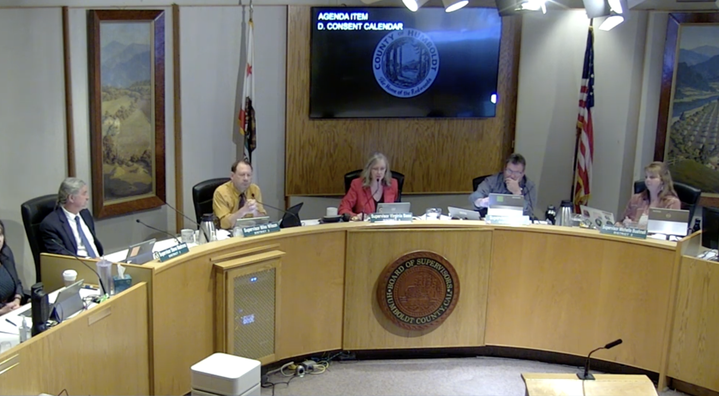
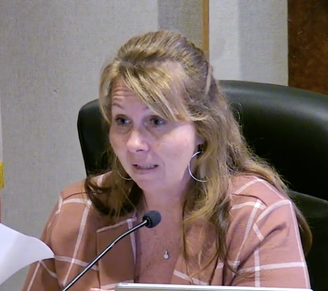
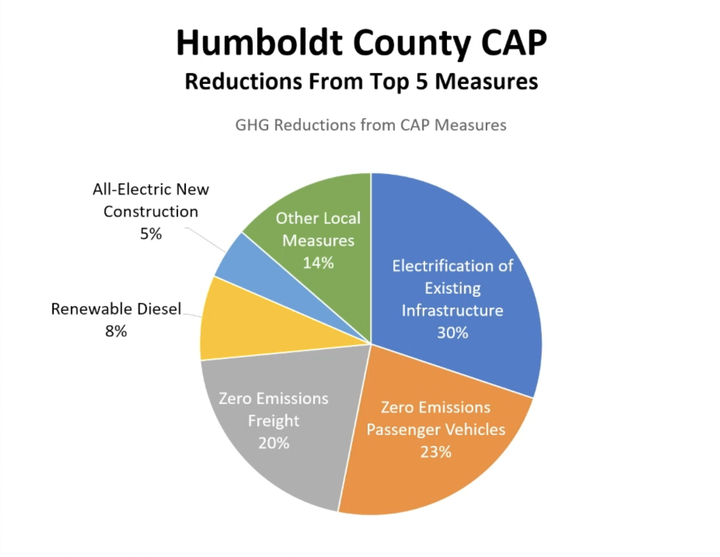
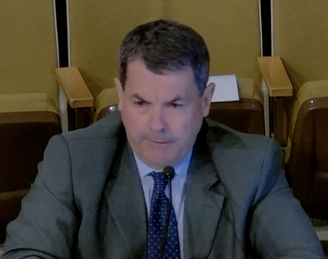
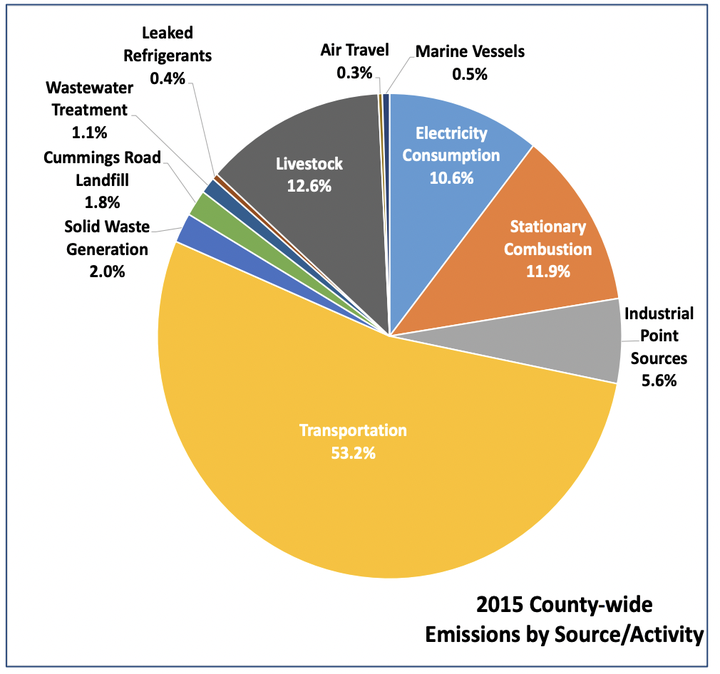
CLICK TO MANAGE